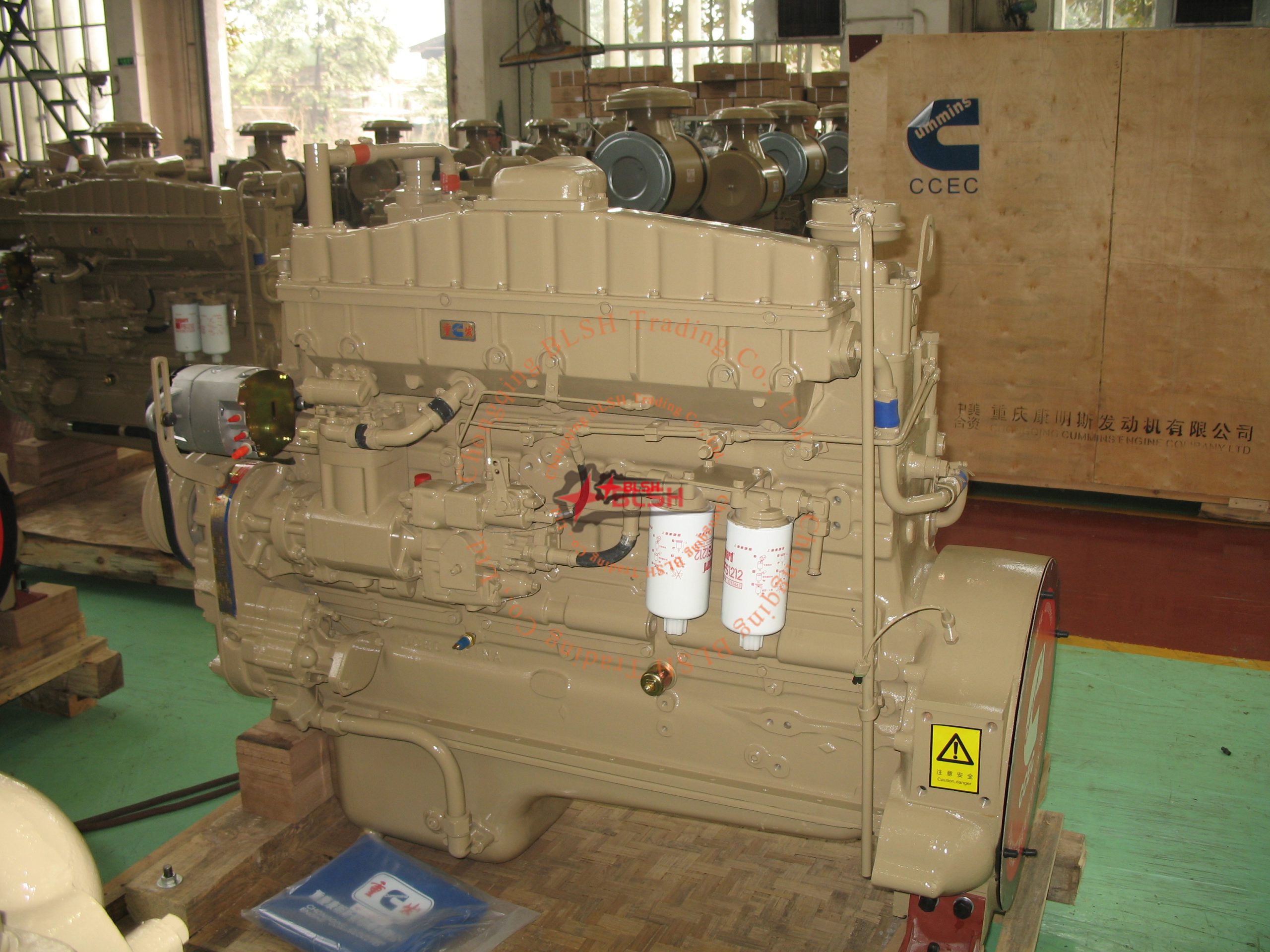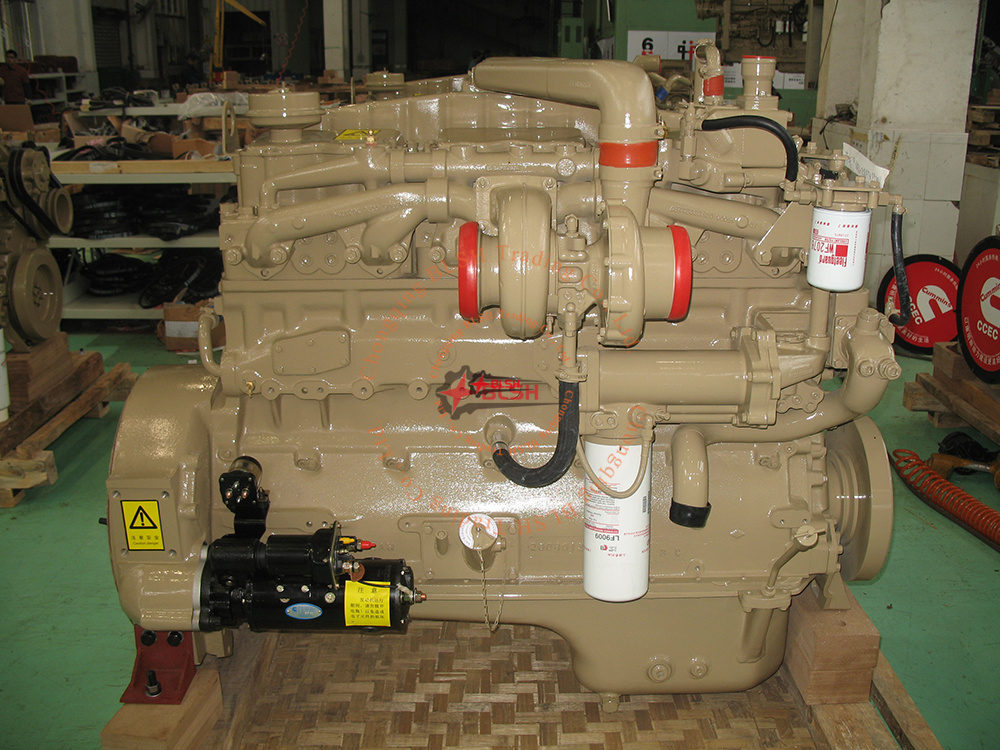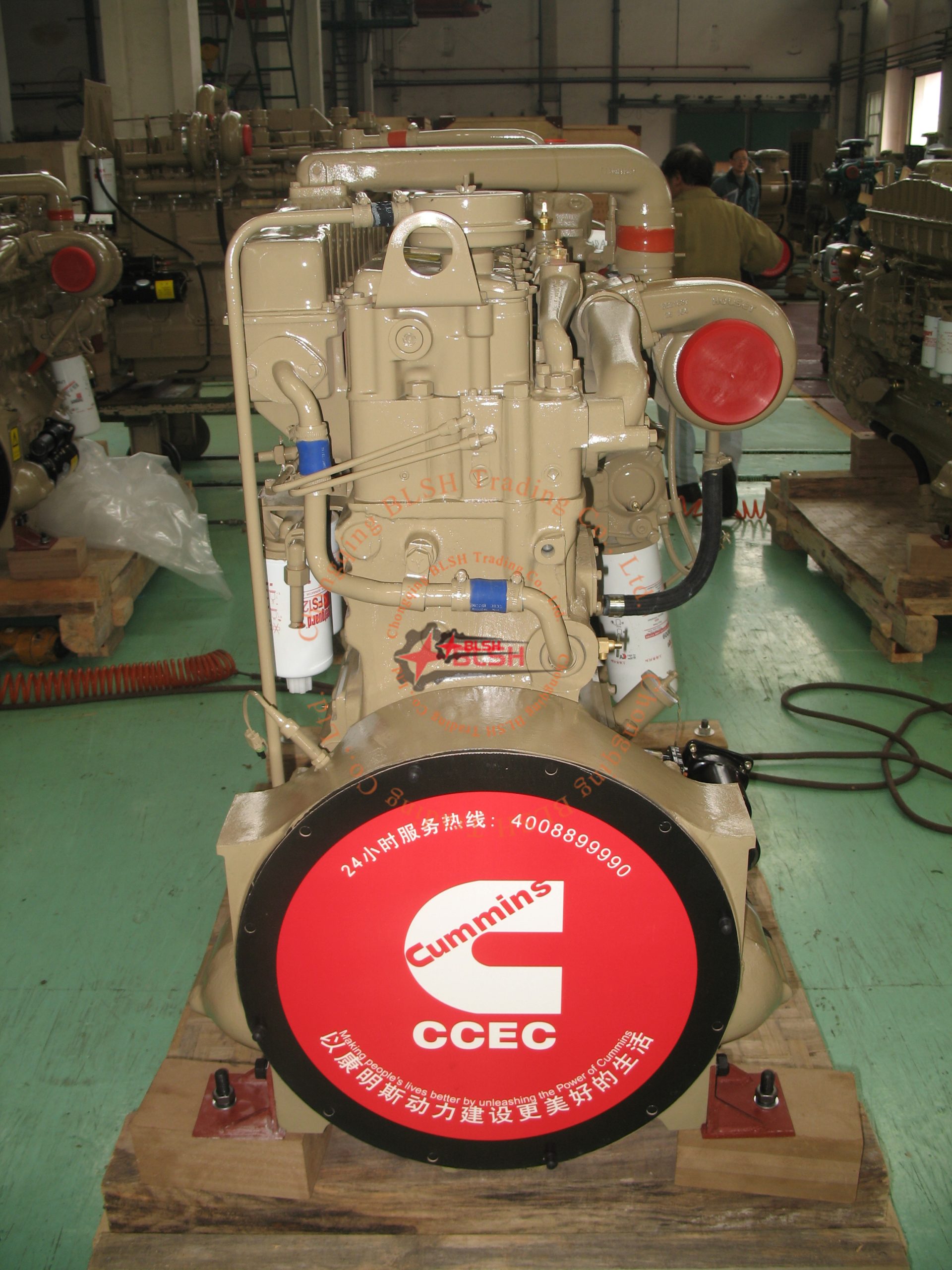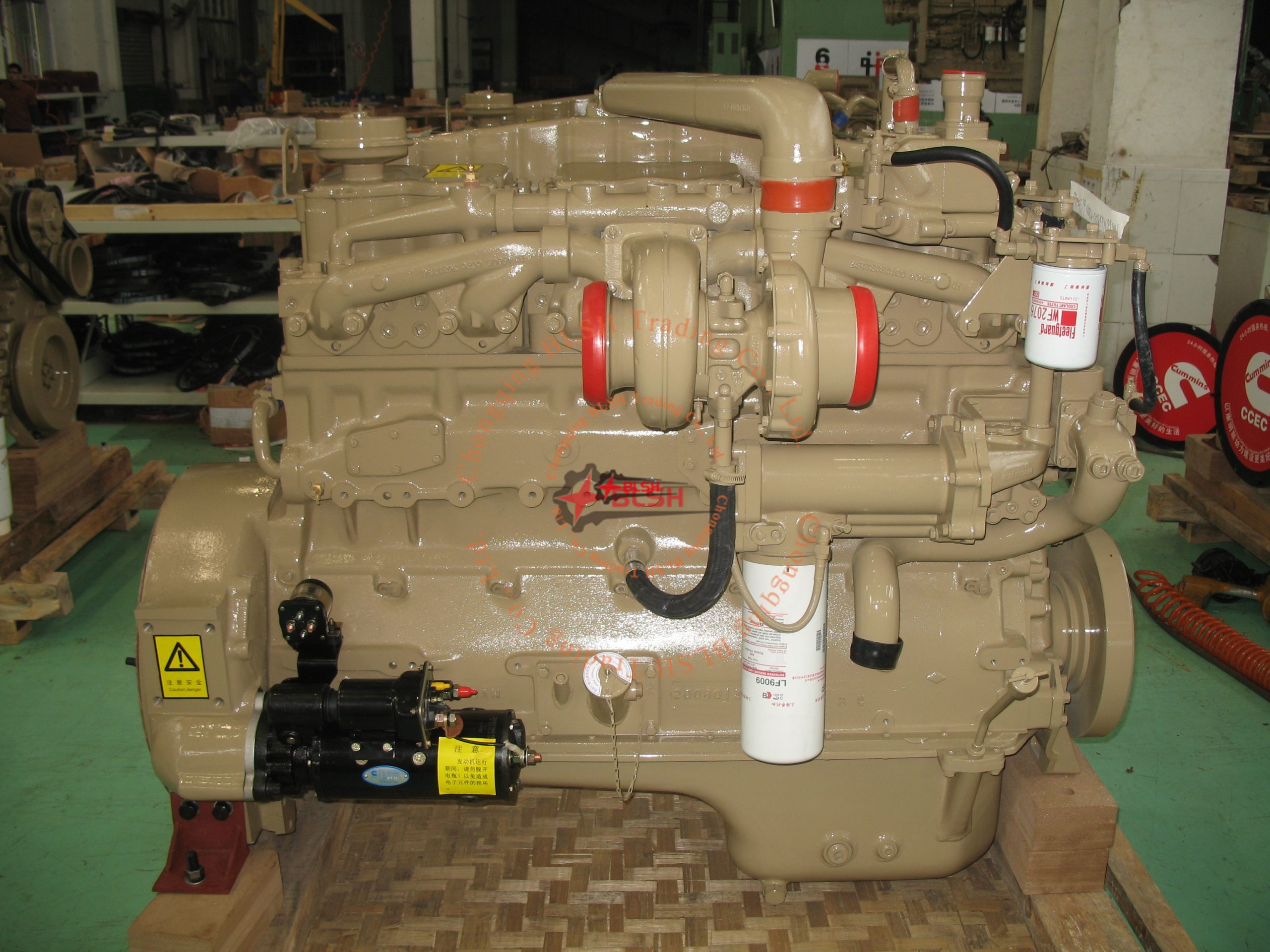NT855-C250/P250/L250 Industrial Application Engine




| Engine Model | NT855-C/P/L250 |
| Maxi. Rating | 250 HP @ 2100 RPM |
| Compression Ratio | 13.9 : 1 |
| Type | 4 Cycle, 60° Vee; 12 Cylinder |
| Fuel System | PT |
| Aspiration | Turbocharged & Aftercooled |
| Emission Standard | Euro II |
| Displacement | 14 L |
| Bore * Stroke | 140 mm × 152 mm |
| Packing Size (L * W * H) | 2151 mm * 966 mm * 1704 mm |
| General Infomation of CCEC NT855-C250 Industrial Engine | |||
| Engine Model | NT855-C250 | Standby Power | N/A |
| Maxi. Rating | 250 HP @ 2100 RPM | Emission Standard | Euro II |
| Curve & Datasheet | C-195 | Peak Torque | 1017 N.m/1500r/min. |
| Compression Ratio | 15.0 : 1 | Displacement | 14 L |
| Type | 4 Cycle , 6 Cylinder | Bore * Stroke | 140 mm × 152 mm |
| Fuel System | PT | Dry Weight (Fan Hub to Flywheel Engine) | 1270 kg |
| Aspiration | Turbocharged & Water-Air Intercooler | Wet Weight (Fan Hub to Flywheel Engine) | 1320 kg |
| Configuration | D092387CX02 | Moment Of Inertia Of Rotating Parts | 1.37 kg·m² |
| CPL Code Revision | 0499 | Firing Order | 1-5-3-6-2-4 |
| Performance Data of CCEC NT855-C250 Industrial Engine | |||
| Engine Idle | 600 r/min | Maximum Idle Engine Speed | 2400 r/min |
| Maximum Overspeed Capacity | 2700 r/min | Minimum Crankshaft Speed Required For Cold Start Without Auxiliary | 150 r/min |
| Minimum Torque Required For Cold Start Without Auxiliary Devices | 509 N·m | ||
| Engine Performance Data CCEC NT855-C250 Industrial Engine | ||||
| Rated point | Maximum torque point | |||
| Engine Speed | 2100 r/min | 1500 r/min | ||
| Output Power | 187 kW | 160 kW | ||
| Torque | 850 N.m | 1017 N.m | ||
| Mean Effective Pressure | 763 kPa | 914 kPa | ||
| Piston Speed | 10.7 m/s | 7.6 m/s | ||
| Mechanical Loss | 53 kW | 29 kW | ||
| Inlet Flow | 335 L/s | 213 L/s | ||
| Exhaust Temperature | 420 ℃ | 490 ℃ | ||
| Exhaust Flow | 797 L/s | 546 L/s | ||
| System Technical Data of CCEC NT855-C250 Industrial Engine | ||
| Exhaust System | Maximum Exhaust Back Pressure | 10 kPa |
| Recommended Exhaust Piping Size (Inner Diameter) | 127 mm | |
| Air Intake System | Maximum Intake Resistance For Light Duty Dry Air Filters— Clean Element | 3.74 kPa |
| Maximum Intake Resistance For Light Duty Dry Air Filters— Dirty Element | 6.22 kPa | |
| Minimum Ash Storage Capacity Of Lightweight Air Filters | 53 g / L/s | |
| Lubrication System | Nominal Operating Oil Pressure — Minimum Low Idle | 103 kPa |
| Nominal Operating Oil Pressure — Rated Speed | 241 – 345 kPs | |
| Maximum Allowable Oil Temperature | 121 ℃ | |
| Total System Volume (Excluding Bypass Filters) | 38.6 L | |
| Cooling System | Coolant Volume — Single Machine | 20.8 L |
| Coolant Volume — With Radiator | 60.6 L | |
| Maximum Allowable Coolant Resistance Outside The Engine | 34.5 2100 r/min – kPa | |
| Maximum Cooling Water Static Pressure (Above Crankshaft Centerline) | 14 m | |
| Standard Thermostat Temperature Range | 82 – 92 ℃ | |
| Minimum Allowable Pressure Cap Pressure | 48.2 kPa | |
| Maximum Temperature Allowed In Radiator Upper Chamber | 100 ℃ | |
| Lowest Temperature Allowed In the Radiator Upper Chamber | 71 ℃ | |
| Minimum expansion space system volume of coolant | 5 % | |
NT855-C/P/L250 Product Advantages
Outstanding Performance
- Advanced PT fuel system with ultra-high injection pressure ensures optimal fuel atomization and complete combustion.
- High-efficiency Cummins turbocharger enhances air intake, improving engine efficiency. The pressure pulse exhaust manifold fully utilizes exhaust energy to further optimize combustion, boost low-load efficiency, and reduce specific fuel consumption.
- High torque, powerful performance, rapid transient response, and superior torque reserve.
Exceptional Durability
- High-strength integrated design of cylinder block and head minimizes failure rates, ensuring long-lasting performance and proven reliability.
Superior Reliability
- Cummins’ advanced PT fuel system features unique overspeed protection, low-pressure fuel supply, and simplified piping for reduced failure rates. Engineered with exceptional overall design for unparalleled reliability.
Easy Maintenance
- Modular design with compact, block-based integration enables detachable and reusable components. Shared platform design ensures high parts commonality across models.

